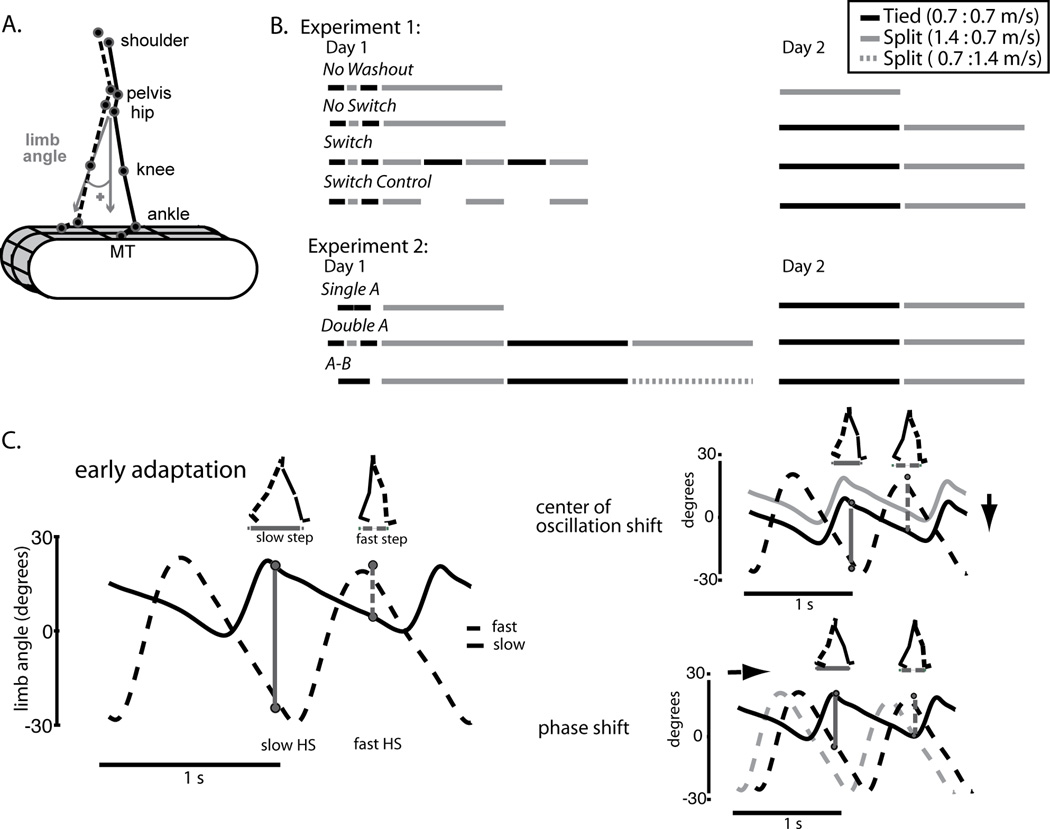Figure 1.
A. Diagram of marker location and limb angle convention. B. Experimental paradigm showing the periods of split-belt waking in gray lines and tied walking in black. Dotted gray lines represent split-belt walking of the opposite speed ratio. The ‘Switch Control’ group sat for five minutes between adaptation blocks. C. Schematic showing how step symmetry can be changed during adaptation. On the left are the limb angle trajectories during early adaptation where step lengths are asymmetric. Two possible ways to make stepping more symmetric are shown on the right. The center of oscillation shift (top) is a spatial change where the limbs gradually shift to oscillate about a midpoint closer to a vertical line intersecting the hip (i.e. center of oscillation = 0). Alternatively the timing of limb motion (i.e. phase shift) can be altered to equalize stepping (shown at bottom). (Figure adapted from (Malone and Bastian 2010)).

